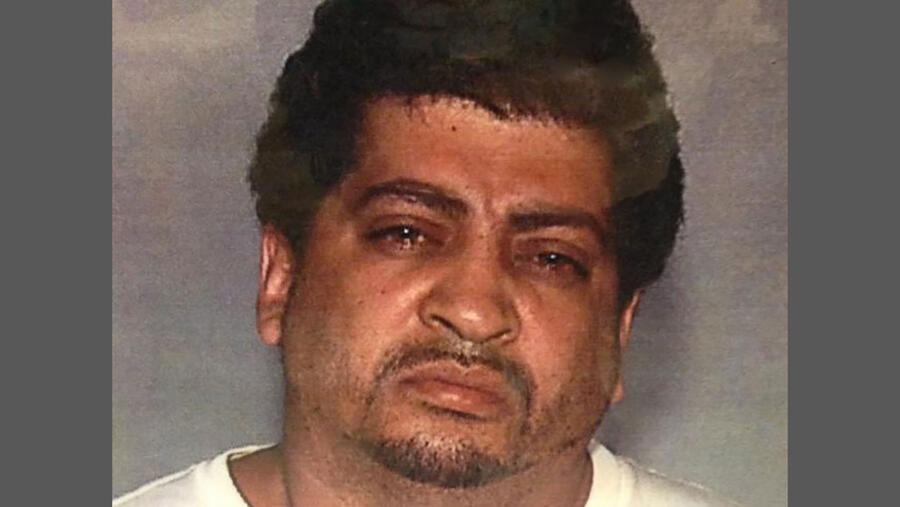When a person vanishes, families often cling to hope. But hope can dwindle as weeks stretch into months and years. In the case of Bruce Blackwood, hope turned into dogged determination, and eventually, justice—thanks to a tenacious detective, a grieving brother, and a daughter brave enough to betray her own father. This story isn’t just about solving a cold case; it’s about the incredible human will to uncover the truth, no matter how long it takes or how dark the path becomes.
The Day Bruce Blackwood Vanished
In 2006, Bruce Blackwood disappeared without a trace. He was no stranger to responsibility. As a manager at Off-Track Betting and the owner of several rental properties, he led a structured, involved life. So when he suddenly stopped communicating with family, suspicion replaced confusion.
His brother, Ed Blackwood, felt it in his bones: Bruce didn’t run away. He pressed the NYPD for answers, but nothing solid turned up. No body, no scene, no witnesses—just questions and growing dread.
Luis Perez: A Handyman with a Criminal Past
Enter Luis Perez, Bruce’s handyman—a figure who raised eyebrows from day one. Perez had a deeply disturbing criminal history. Years earlier, he had been imprisoned for attempting to abduct his own daughter and had attacked her mother and stabbed a state trooper. He was no stranger to violence.
Soon after Bruce vanished, Perez forged 13 checks in his employer’s name, cashing in over $7,700. When questioned, he told investigators a vague story about Bruce leaving in a black car after a conversation about renovations. Yet neighbors recalled Perez suspiciously dismantling a power saw the very next day. Still, nothing could tie him to the crime—yet.
A Case That Grew Cold… and Quiet
Despite the alarming clues, without physical evidence or a body, authorities couldn’t move forward. Perez was arrested, but only for fraud. He served just over two years and walked free. Meanwhile, Bruce’s family lived in limbo.
But Ed Blackwood refused to accept silence. For five long years, he pushed for justice. Eventually, his persistence earned him an audience with then–Police Commissioner Raymond Kelly in 2011. This wasn’t just a missing person case, Ed insisted—it was murder.
Detective Wendell Stradford Reopens the Case
Commissioner Kelly listened. He handed the file to Detective Wendell Stradford, a seasoned cold case investigator with a knack for solving the unsolvable. Stradford did what others hadn’t—he started from scratch.
He reviewed every document, retraced every lead, and began connecting dots long forgotten. One unusual pattern stood out: several of Bruce’s properties had been sold while Perez was in prison. The transactions weren’t illegal, but they pointed to suspicious financial activity surrounding Bruce’s disappearance. It became clear: someone had profited from his death.
The Twist No One Expected: A Daughter Turns Informant
Years passed without a breakthrough. Then came the call that changed everything.
Perez’s own daughter walked into a police precinct and confessed that she had overheard her father bragging about getting away with murder. It was chilling, but not admissible in court. Stradford needed hard proof.
In a courageous act, she agreed to wear a wire.
The Confession That Changed Everything
Her first attempt at recording Perez failed—too much background noise, unclear audio. Yet she didn’t back down. She lived under the same roof, enduring her father’s arrogance and twisted stories. The second recording worked.
What she captured shocked even hardened detectives.
Perez detailed the murder like a recipe. He described how he dismembered Bruce Blackwood, comparing it to “cutting up a chicken.” The recording was raw, horrifying, and damning. It was the break they had waited nearly a decade for.
The Final Arrest and a Family’s Long-Awaited Justice
Armed with the confession, Detective Stradford brought in Perez. Investigators backed up the recording with other statements Perez had made over the years. The case was airtight. After all this time, they had him.
Perez was arrested—this time not for fraud, but for murder.
For Ed Blackwood and the rest of the family, the arrest marked the end of years of torment. The man they had suspected all along had finally been exposed, and by the person no one saw coming: his daughter.
Persistence Solves Cold Cases
Detective Stradford reflected on the case: “You can’t do what everybody else did before. You have to look at everything again, question every lead, and dig deeper.”
In Bruce’s case, justice came not through DNA, but through legwork, persistence, and human bravery. Without a body, a weapon, or physical evidence, the case hinged on testimony and trust—one woman’s decision to expose her father.
What Can We Learn from Bruce Blackwood’s Story?
This case serves as a powerful reminder: cold cases are never truly cold if someone keeps asking questions. It also underscores how personal relationships, no matter how complicated, can be central to solving crimes. The Blackwood case shows us that truth has a way of surfacing, even after years of darkness.
Frequently Asked Questions
Can a murder be solved without a body?
Yes. Cases like Bruce Blackwood’s show that confessions, circumstantial evidence, and witness cooperation can lead to convictions even without a body.
Why didn’t police arrest Perez sooner?
Although they suspected him, they lacked hard evidence. With no body or confession, the case didn’t meet legal thresholds for arrest until much later.
Is it common for family members to help solve crimes?
Increasingly, yes. Families often reignite cold cases by keeping pressure on law enforcement or providing crucial new leads.
How do detectives handle cold cases?
They re-examine old evidence, interview witnesses again, trace financial or digital footprints, and remain open to new techniques and technologies.
Why was the daughter’s confession important?
It offered first-hand knowledge. Her bravery in recording her father’s confession was the key evidence that finally solved the case.
Was DNA involved in this case?
No. The case was solved entirely through testimony, recordings, and classic investigative techniques.

